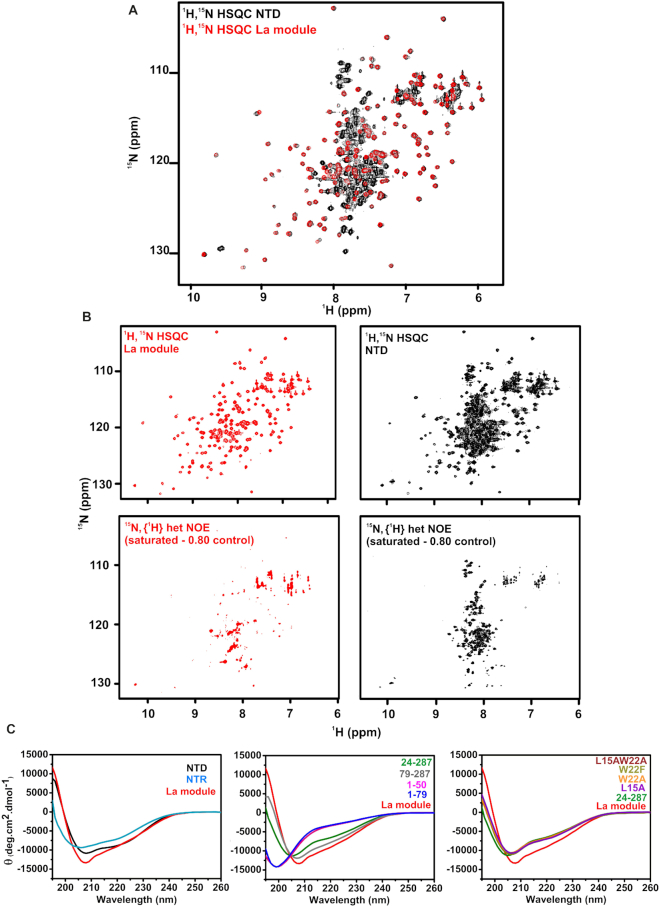Figure 4.
LARP4A NTD contains structured and disordered regions. (A) Superimposition of the 1H-15N HSQC spectra of the La module (red) and the NTD (black). (B) Comparison of 1H-15N HSQC and a subspectrum of {1H}-15N heteronuclear NOE experiment (saturated - 0.80 control) for La module (top and bottom left panels) and NTD (top and bottom right panels). The signals left in the subtraction spectra on the bottom undergo motions on the pico- to nanosecond timescale. The majority of the NTR resonances are experiencing fast motion. (C) Far-UV CD analysis. Far-UV CD spectra of: left, LARP4A NTD, NTR and La module; centre, 24–287, 79–287, 1–50 and 1–79 mutants compared to the La module; right, L15AW22A, W22F, W22A and L15A mutants compared to 24–287 and La module. Each CD trace is colour labelled. The CD profiles indicate that the N-terminal region contains disordered regions and secondary structure elements (see text).

